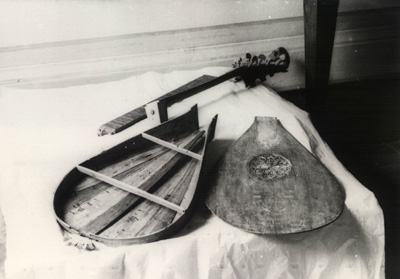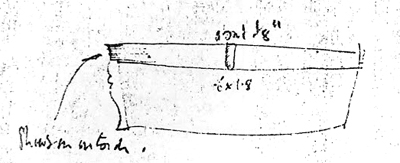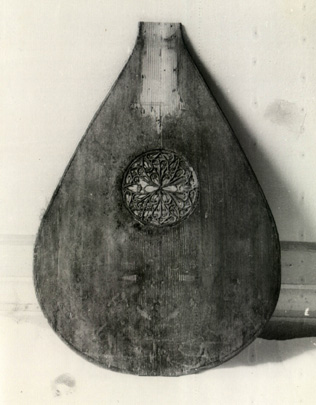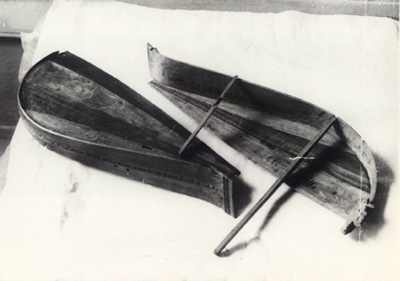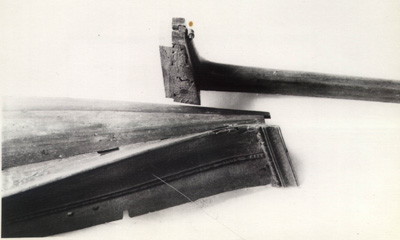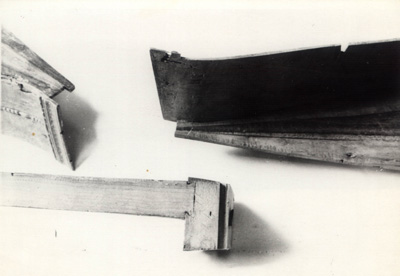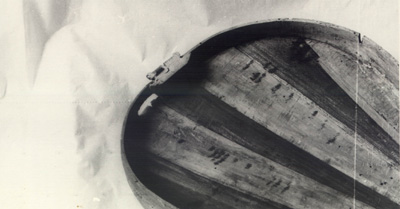Cittern attributed to Nicolò Amati
Last updated
Sunday, April 02, 2023.
|
Return to Old Instruments Gallery |
Please note that all images here have been cropped and resized in order to be web-friendly. However, larger, uncropped, high-res images of the same can be had either by clicking on the image (to open in a separate browser window), or by right clicking and selecting "Save As" (to save to your computer).
Images |
|||
|---|---|---|---|
General Description |
This cittern was in the collection of the Museo Bardini, Florence. It came apart in the massive flood of 1966,1 which, though damaging to the instrument, has allowed us to see details of its construction that might not have been otherwise readily apparent. It was photographed and examined by the late Stephen Gottlieb in June of 1974. A cittern-player visited the museum somewhere between 1995-2005 on behalf of Peter Forrester to follow up on questions about the peg arrangement (see below). After a fairly long search, the museum could not find the instrument. It was suggested at the time that the instrument had been taken away for reassembly but not returned.... I have labeled this instrument as "current location: unknown," though it is possible that the instrument is still, in fact, in the possession of the museum and just has not been confirmed. The instrument is fully constructed but in imitation of the earlier carved style. It is diatonically fretted, and possesses 13(?) pegs arranged for 6 courses. The extent of the carved imitation extends not only to the body style, but even down to details such as the in-set string comb, carved pilasters, carved beading along the sides. The two holes in the side may be a partial clue to its method of construction (see below). Of the overall workmanship, Stephen Gottlieb noted at the time of examination in 1977: "Inside is very crudely made, although joints neatly cut, with saw & plane marks everywhere. Outside so-so, but stylish looking instrument." |
||
Provenance / Maker |
The instrument is (questionably) attributed to Cremonese luthier Nicola / Nicolò / Nicolao Amati (1596-1684), which would make this a rather late example of this style of cittern. | ||
Woods |
A complete analysis of the woods is yet to be done; however a preliminary identification of the woods is as follows:
|
||
Stephen's notes from the time of examination state "I had no time to take adequate dimensions of this instrument, which was in pieces because of flood damage. But see photographs." The few measurements below are all taken directly from his notes. Body: Back: Soundboard bars:
He marks above his diagram "about 1/8" ", but it is unclear what that refers to. The measurement below appears to read ".6 x 1.8," which one might infer to mean 6 mm x 18 mm (i.e. .6 cm x 1.8 cm) for the dimensions of the center of the bar. Sides: |
|||
Soundboard |
As mentioned above, the soundboard appears to be made from coarse "pine" (generic term) with a wide grain. The top is of four pieces, with "wings" on the outer edges, all joints clearly visible on the inside. The rose is "let in" to the top, the top being slightly chamfered at the edges to meet the rose. The rear of the rose is reinforced with small bars, approx. 2mm x 2mm. The soundboard appears to be decorated with inked or painted lines instead of purfling, and the area of the rosette has an intricate inked or painted pattern that is difficult to make out. (See Peter Forrester's 'Amati' copy for a similar, but inspired, design.) There may have been more painting below the bridge.2 No bars are present on the soundboard. Instead, two main bars (one above, one below the rose) were set into the sides of the instrument. Both bars are noted by Stephen as "curved." The location of the bars can be seen on the inside of the soundboard, and the areas where the bars pass through the sides can be seen in other photographs. |
||
Back & Sides |
When the instrument was examined in 1974, it had no linings on the inside and no maker's label. It is unknown at this time if it had linings or a label prior to the flood of 1966. Visible in the photo below are the main bars "set in" to the sides. The back is made of alternating strakes. It is unclear from the photographs if the back was rebated into the sides. (Peter Forrester's copy has held up fine without rebating.) The sides include beaded carving that runs around the instrument at the center of the ribs. The pilasters are carved as well. The photographs show two small holes in the bass side of the instrument only. One theory is that these would have been used to affix the sides of the instrument to an interior mould. Considering that they are only found on the bass side (the side facing the player), were they possibly intended to function as additional sound holes (orecchie) as they are on the traditional (folk) chitarra battente?3 Peter Forrester also suggests that they might also be related to some sort of support system for the instrument.4
|
||
Pegboard & Stringing |
There is some uncertainty about the peg arrangement and number of strings. Stephen's notes indicate the stringing as 2/2/3/3/2/2, meaning that the third and fourth courses both have three strings. This was likely based on the string grooves behind the zero fret of the fingerboard (see image below). As for the pegs, he notes, "No extra pegholes — peg arrangement has not been altered." However, he never explicitly states how many pegs are present, and there are no frontal photos of the peghead, making the number of pegs unclear. From the images it would appear that there are two rows of 4 pegs along the "flanks" of the pegboard, 3 in the center, and 2 lateral ones on the bass side, which would bring the number to 13 – much like the arrangement of pegs in V&A 10/1. Peter Forrester suggests that the "uppermost of the 4th course's apparent three slots ... is too close to the 3rd course and is part of a later arrangement for six double courses." A string arrangement of "11/22/333/x44/55/66 becomes 11/22/33x/44x/55/66." Regarding the number of pegs, he also suggests that "10/1 had its surplus hole filled, this one had its peg retained?"5
|
||
Neck and Fingerboard |
The neck appears to be made of plain sycamore. The end of the neck is dovetailed into a cross-grained block and secured by a nail. The fingerboard shows evidence of knife cuts on the gluing surface.
|
||
Fretting |
Fret arrangement is diatonic, with 18 frets total (fret position 19 being the last fret, and the 18th fret position completely missing). The fourth course possesses frets in every chromatic position except for the missing 18th fret. The fretting is almost identical to that of V&A 10/1 and Vienna no. 971, with the exception that the 15th fret position covers the 1st, 2nd, and 4th courses, compared to the others covering only the 1st and 4th courses.6 | ||
String Holder
|
The bottom block is of one piece with the comb.
|
||
Acknowledgements |
I would like to gratefully acknowledge the late Stephen Gottlieb for allowing his photographs and examination notes to be used as well as Peter Forrester for his guidance and many clarifications of Stephen's notes as well as for his research into the orecchie. Likewise, Werner Schag for his reference to orrechie as common features in medieval fiddles [note 3, below]. | ||
Footnotes |
|
How to cite this page: Hartig, Andrew. "Cittern attributed to Nicolò Amati." Renovata Cythara: The Renaissance Cittern Site. Ed. Andrew Hartig. 02 April 2023. 02 June 2025. <http://www.cittern.theaterofmusic.com/old/amati.html>.
